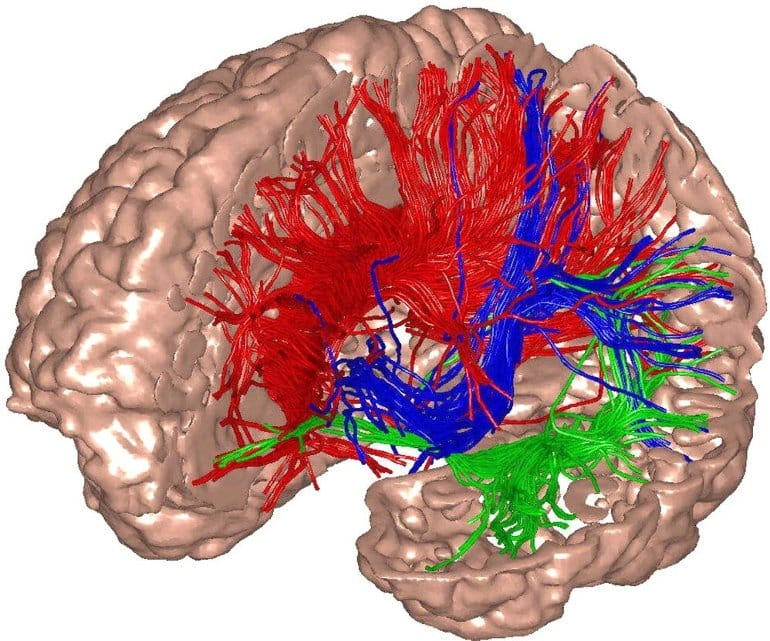abstract: through inhibiting NMDA receptors, ketamine increases noise to gamma frequencies in a single layer of the thalamic nucleus and one lay of the somatosensory cortex. Findings indicate psychosis could be prompted by means of a rise in history noise impairing thalamocortical neurons which may be led to by a malfunction in NMDA receptors affecting the balance of inhibition and excitation within the brain.
supply: HSE
an international team of researchers together with Sofya Kulikova, Senior analysis Fellow on the HSE school-Perm, discovered that ketamine, being an NMDA receptor inhibitor, increases the mind's background noise, causing larger entropy of incoming sensory indicators and disrupting their transmission between the thalamus and the cortex.
This finding may make contributions to a higher realizing of the explanations of psychosis in schizophrenia.
an article with the look at's findings has been published within the European Journal of Neuroscience.
Schizophrenic spectrum issues have an effect on approximately one in 300 people international. the most standard manifestations of these problems are perceptual disturbances corresponding to hallucinations, delusions and psychoses.
A drug referred to as ketamine can set off a intellectual state corresponding to psychosis in fit people. Ketamine inhibits NMDA receptors worried within the transmission of excitatory indicators within the mind. An imbalance of excitation and inhibition in the primary worried device can have an effect on the accuracy of sensory belief.
identical adjustments within the functioning of NMDA receptors are currently believed to be one of the vital explanations of perception disorders in schizophrenia. however, it remains uncertain how precisely this manner happens within the brain areas concerned.
To find out, neuroscientists from France, Austria and Russia studied how the brains of laboratory rats on ketamine method sensory signals. The researchers examined beta and gamma oscillations occurring in accordance with sensory stimuli within the rodent brain's thalamo-cortical equipment , a neural network connecting the cerebral cortex with the thalamus liable for the transmission of sensory advice from the organs of perception to the brain.
Beta oscillations are brainwaves within the range of 15 to 30 Hz, and gamma waves are these in the latitude of 30 to 80 Hz. These frequencies are believed to be essential for encoding and integrating sensory information.
in the experiment, rats were implanted with microelectrodes to checklist the electrical pastime in the thalamus and the somatosensory cortex , a area of the brain which is accountable for processing sensory information coming from the thalamus. The researchers prompted the rats' whiskers (vibrissae) and recorded the mind's responses earlier than and after ketamine administration.
A comparison of both datasets published that ketamine elevated the vigor of beta and gamma oscillations within the cortex and the thalamus even within the resting state before a stimulus turned into offered, whereas the amplitude of the beta/gamma oscillations in the 200–700 ms publish-stimulus period become enormously decrease at all recorded cortical and thalamic websites following ketamine administration.
 Ketamine inhibits NMDA receptors concerned within the transmission of excitatory signals within the brain. credit: Izhikevich, Edelman
Ketamine inhibits NMDA receptors concerned within the transmission of excitatory signals within the brain. credit: Izhikevich, Edelman The put up-stimulation time lapse of 200–seven hundred ms is long satisfactory to encode, combine and understand the incoming sensory signal. The observed lessen within the vigor of sensory stimulus-precipitated oscillations may also be associated with impaired perception.
analysis additionally printed that by way of inhibiting NMDA receptors, ketamine administration delivered noise to gamma frequencies in the post-stimulation 200–seven hundred ms duration in a single thalamic nucleus and in a single layer of the somatosensory cortex. It will also be assumed that this followed raise in noise, ie a discount within the sign-to-noise ratio, also suggests the neurons' impaired capability to method incoming sensory indicators.
These findings indicate that psychosis may well be triggered with the aid of an increase in heritage noise impairing the function of thalamo-cortical neurons. This, in turn, may well be caused with the aid of a malfunction of NMDA receptors affecting the steadiness of inhibition and excitation within the mind. The noise makes sensory signals less defined or mentioned. furthermore, this can cause spontaneous outbursts of exercise linked to a distorted perception of reality.
"The discovered differences in thalamic and cortical electrical activity associated with ketamine-triggered sensory guidance processing issues may function biomarkers for trying out antipsychotic medication or predicting the path of disorder in patients with psychotic spectrum problems," says Sofya Kulikova.
author: Anastasia LobanovaSource: HSEContact: Anastasia Lobanova – HSEImage: The photograph is credited to Izhikevich, Edelman
customary research: Open access."The psychotomimetic ketamine disrupts the transfer of late sensory tips in the corticothalamic network" by Yi Qin et al. European Journal of Neuroscience
abstract
The psychotomimetic ketamine disrupts the switch of late sensory assistance in the corticothalamic community
In prodromal and early schizophrenia, issues of attention and notion are associated with structural and chemical brain abnormalities and with dysfunctional corticothalamic networks exhibiting disturbed mind rhythms. The underlying mechanisms are elusive.
The non-competitive NMDA receptor antagonist ketamine simulates the signs of prodromal and early schizophrenia, including disturbances in ongoing and task & sensory-related broadband beta−/gamma-frequency (17–29 Hz/30–eighty Hz) oscillations in corticothalamic networks.
In standard healthy topics and rodents, complicated integration procedures, like sensory belief, set off transient, big-scale synchronised beta/gamma oscillations in a time window of a couple of hundred ms (200–seven hundred ms) after the presentation of the article of consideration (e.g., sensory stimulation).
Our goal was to use an electrophysiological multisite network strategy to examine, in lightly anesthetised rats, the outcomes of a single psychotomimetic dose (2.5 mg/kg, subcutaneous) of ketamine on sensory stimulus-caused oscillations.
Ketamine transiently expanded the energy of baseline beta/gamma oscillations and lowered sensory-brought about beta/gamma oscillations. additionally, it disrupted information transferability in each the somatosensory thalamus and the connected cortex and reduced the sensory-caused thalamocortical connectivity within the broadband gamma range.
The current findings guide the speculation that NMDA receptor antagonism disrupts the switch of perceptual assistance within the somatosensory cortico-thalamo-cortical system.

Post a Comment